Sharks are very popular animals. There are many movies about them, and many events themed after these famous creatures that reside in the sea. No doubt, sharks are pretty exciting and interesting, and we have compiled some rather incredible facts about them.
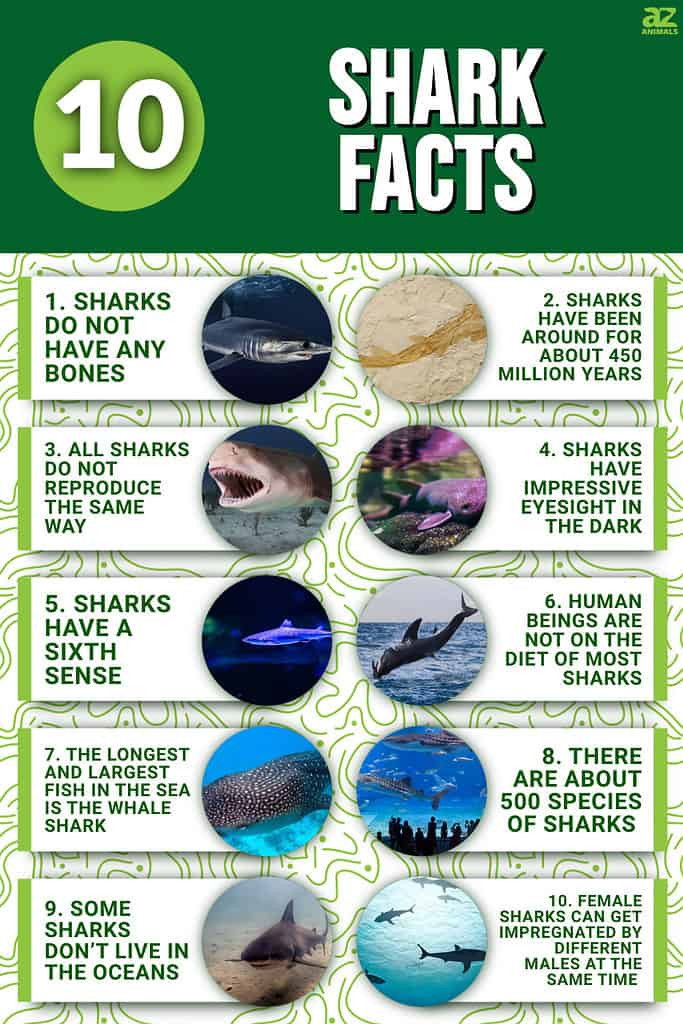
1. Sharks do not have any bones

There are no bones in sharks.
©wildestanimal/Shutterstock.com
Since the shark is an apex predator, it makes sense that it would have strong bones, but that is not the case. Sharks are a kind of fish referred to as “elasmobranchs” which means that they are made up of cartilage. Cartilage is the same material that the human nose and ears are made up of and it is lighter than bones. Sharks are not the only types of fish that are made up of cartilage. Others include sawfish, rays, and skates.
However, just because sharks are made up of cartilage is no reason to assume that they are not tough. Certain areas of a shark’s body such as the head are made up of cartilage that has been calcified by calcium salts which make them tougher than just cartilage.
2. Sharks have been around for about 450 million years
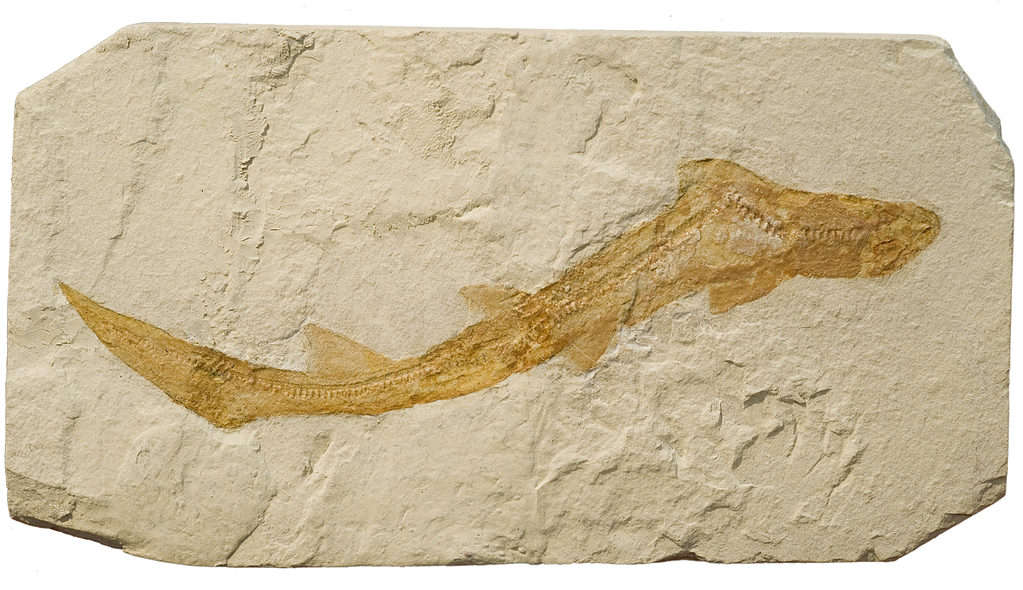
Sharks are some of the oldest animals on Earth.
©MarcelClemens/Shutterstock.com
Sharks are very ancient. Scientists place the first appearance of sharks about 450 million years ago. Of course, there are debates about whether these creatures were actually sharks or just shark-like creatures. However, there is no debate about shark fossils from 195 million years ago, which is still pretty ancient.
3. All sharks do not reproduce the same way
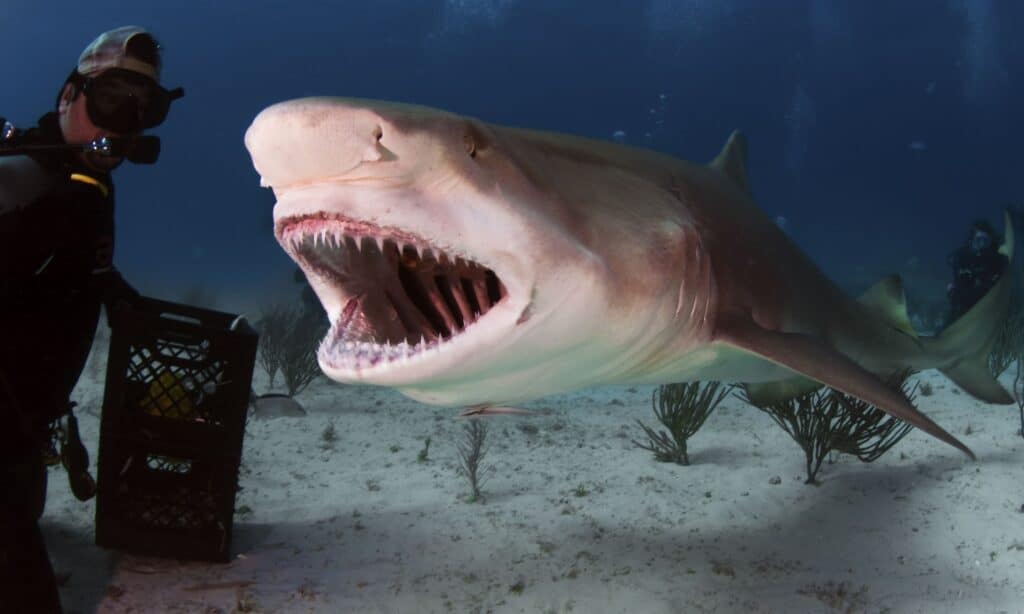
Lemon sharks are viviparous.
©Greg Amptman/Shutterstock.com
Sharks reproduce primarily in two different ways. The first is by laying eggs and the other is a live birth. Sharks that lay eggs are referred to as oviparous (egg-laying) species. Examples of sharks that are oviparous include:
- Cat Sharks
- Dogfish Sharks
- Australian Sharks
- Zebra Sharks
- Bamboo Sharks
Usually, it takes 6-9 months for a shark’s egg to hatch.
On the other hand, sharks that lay their eggs internally and give birth to live young ones are referred to as ovoviviparous. Examples of sharks that are ovoviviparous include:
- Great White Sharks
- Whale Sharks
- Leopard Sharks
- Thresher Sharks
- Mako Sharks
4. Sharks have impressive eyesight in the dark
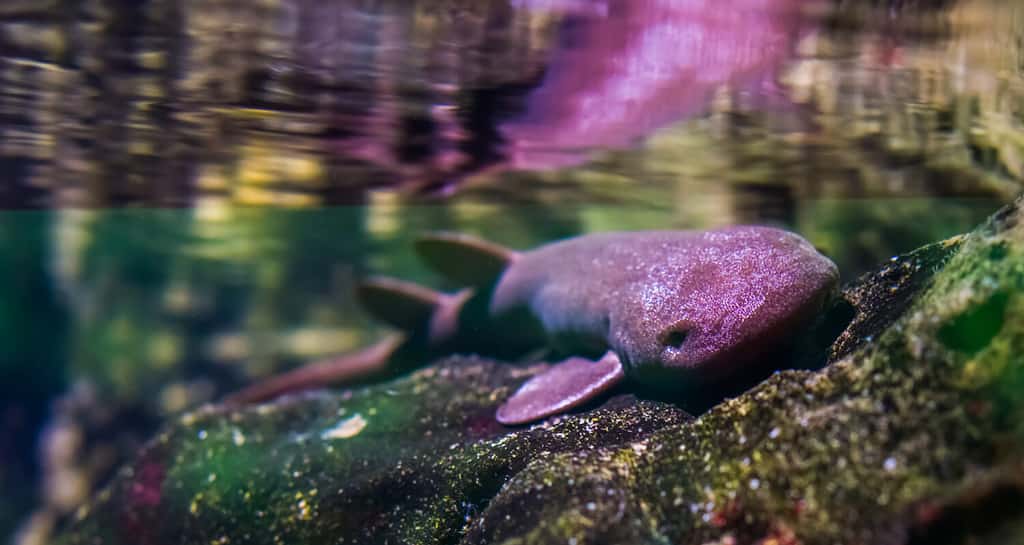
Sharks have a tapetum lucidum that helps them in low-light situations.
©Charlotte Bleijenberg/Shutterstock.com
Sharks have eyes like ours in many respect and scientists state that their eyes function like ours in many respects. However, sharks decidedly see far better than humans (10 times better) in dim light and murky water. The reason for this is a unique feature called tapetum lucidum that is present in eyes of sharks. Tapetum lucidum is a layer of mirrored crystals found behind the retina. When light goes through the retina, it hits the crystals and is reflected back to the retina. This ensures that light is available to a shark’s retina twice, therefore increasing visibility in areas of poor light. As you dive deeper into the water, the light gets dimmer, making this feature very useful to sharks.
5. Sharks have a sixth sense

Electroreception helps sharks find prey in the water.
©iStock.com/Zelenenka
Sharks have all the usual senses that humans have plus an extra sense that makes them incredibly efficient hunters. This sixth sense is called electroreception, which is the ability to sense electrical signals coming from animals and to use these signals to find them. Electroreception is possible in sharks through the use of their ampullae of Lorenzini which is located in their snout. The implication is that sharks don’t need to smell, see or feel prey to find them, they can find them simply by detecting electric impulses in the heartbeat or muscle movements.
6. Human beings are not on the diet of most sharks

Attacks on humans are usually because a shark has mistaken them for something else.
©iStock.com/Alessandro De Maddalena
Sharks generally do not attack or eat human beings. Their natural prey are fishes and other forms of marine life. The occurrence of a shark attack on a human being is very rare, and the few times that they attack it is usually out of curiosity or confusion. According to a study from Macquarie University in Sydney, the great white shark sometimes attack human beings because they mistake humans for seals and sea lions. This mistake is more commonly made by juvenile sharks.
In fact, the rarity of shark attacks and killings of human beings is so serious that experts mention that people are far more likely to die from lightning strikes than from shark attacks.
7. The longest and largest fish in the sea is the whale shark

Whale sharks are the largest fish in the world.
©iStock.com/crisod
The whale shark is the largest fish in the world and it may grow up to 40 feet (480 inches). This kind of shark is usually found in tropical and warm seas and oceans around the world. Despite its large size, this shark mostly feeds on small organisms in the sea such as squid and plankton. It also has a very gentle temperament.
8. There are about 500 species of sharks

There are so many different sharks in the world’s waters.
©Isaac Mok/Shutterstock.com
There are several different kinds of sharks with each of these species possessing unique features and personalities. These different species live in multiple habitats and take unique and different physical forms. They also vary in size with some only a few inches long while others are about 480 inches long.
9. Some sharks don’t live in the oceans

Some sharks are able to thrive in freshwater.
©Rob Atherton/Shutterstock.com
While it is true that all the world’s oceans serve as homes to different shark species, some species of shark live in lakes and rivers instead. Bull sharks, for instance, inhabit tropical rivers and have evolved to swim between salt and freshwater. Also, the river sharks, as their name suggests, live in the rivers of South Asia, Australia, and New Guinea. Therefore, you may not need to go all the way to the ocean to meet a shark.
10. Female sharks can get impregnated by different males at the same time
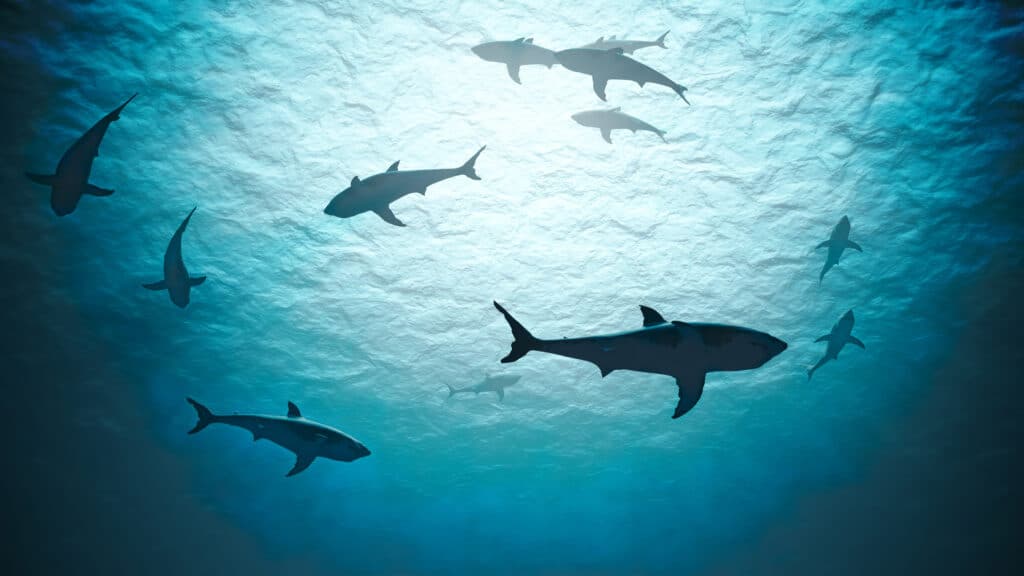
Shark litters can be from different fathers.
©iStock.com/vchal
Studies have found out that a shark litter may contain shark pups from multiple fathers. This happens when female shark mates with multiple males in quick succession usually because resisting any of them would be more difficult and painful than simply consenting. This means that female sharks may be impregnated by anywhere from two to five different males at the same time, and that pups given birth to at the same time could be half-siblings. A shark litter may contain anywhere from two pups to 100 pups.
The photo featured at the top of this post is © Alessandro De Maddalena/Shutterstock.com
Thank you for reading! Have some feedback for us? Contact the AZ Animals editorial team.






